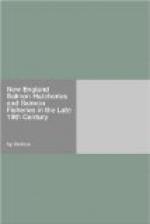In carrying out its most important function—the maintenance and increase of the supply of food fishes—the U.S. Commission of Fish and Fisheries, in addition to direct efforts to increase the abundance of fishes naturally inhabiting our various rivers, lakes, and coast waters, has given considerable attention to the experimental introduction of fishes into regions or streams to which they were not native.
The wonderful success which has followed the planting of shad and striped bass fry in the waters of the Pacific coast is well known. The results attending the recent attempts of the Commission to establish a run of salmon (Salmo salar) in some of the large rivers of the Atlantic coast have been so noteworthy in the case of the Hudson as to afford reasonable ground for expecting the early inauguration of a regular fishery, should the present rate of increase in the abundance of the fish be maintained. Similar striking results may also be anticipated in all the more northern streams of the east coast, including the Housatonic, Connecticut, and Merrimac, in which salmon were at one time found in abundance and are now taken in small numbers, if the ascent of the adult fish to the headwaters for the purpose of spawning is permitted and if sufficiently extensive fish-cultural operations are continued.
The primary purpose of this paper is to record some of the apparent results of salmon propagation in our rivers as shown by the occurrence of the fish at points on the coast or at sea more or less remote from the places where fry have been deposited.
While an interesting and instructive compilation might be made of the instances of the capture of salmon in the Hudson, Delaware, Susquehanna, Potomac, and other rivers in which the fish has been acclimated, such a work is not necessary in view of the notice which has already been accorded the matter in the public press and in the reports of several of the State fish commissions, notably the New York commission.
So much yet remains to be learned regarding the lines of migration of the salmon to and from the rivers, its winter habitat, the existence of an “instinct of nativity” which is supposed to impel the return of the fish to the place where hatched, the extent of the coastwise distribution of salmon originally belonging in a given river, and numerous other practical and scientific questions, that the presentation of any data bearing on the occurrence of the fish outside of the rivers may be regarded as acceptable and timely.
In an interesting article on “Salmon at Sea,” communicated to the issue of Forest and Stream for February 18, 1892, Mr. A. N. Cheney, the well-known angling expert and writer on fish-cultural matters, discusses the question of the whereabouts of salmon after they leave the rivers, and quotes the following from a previous contribution by himself on the subject:




